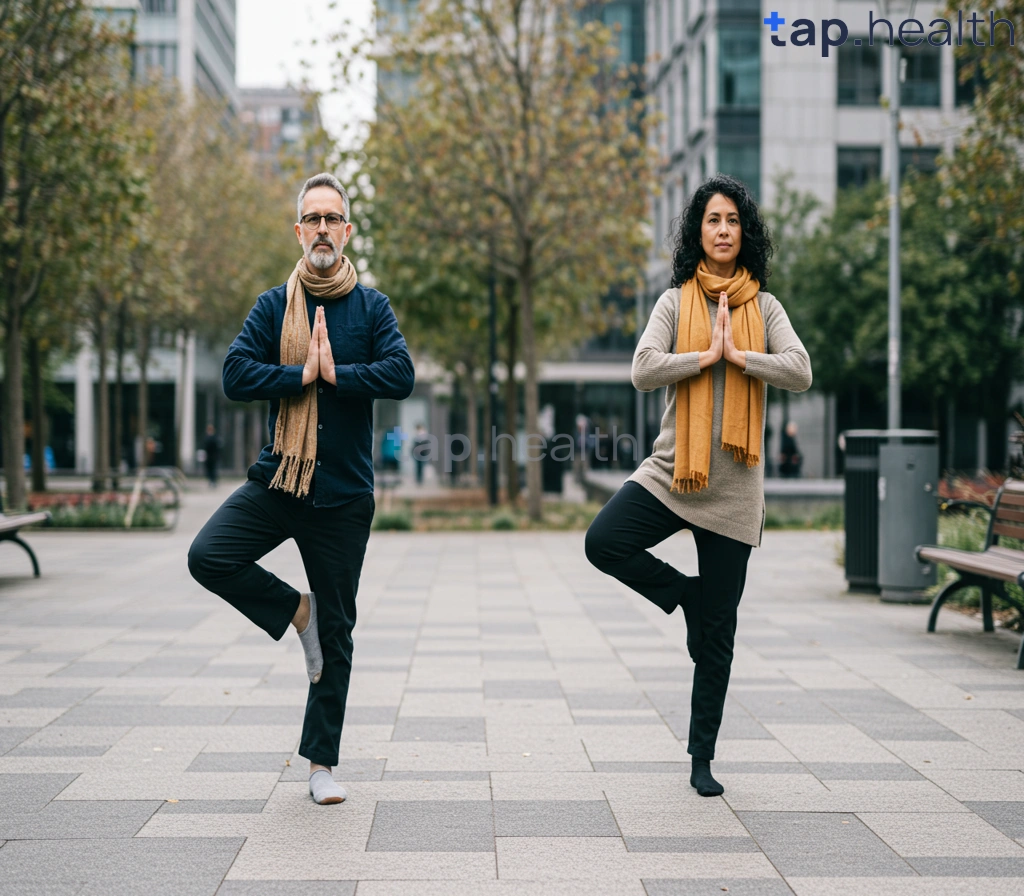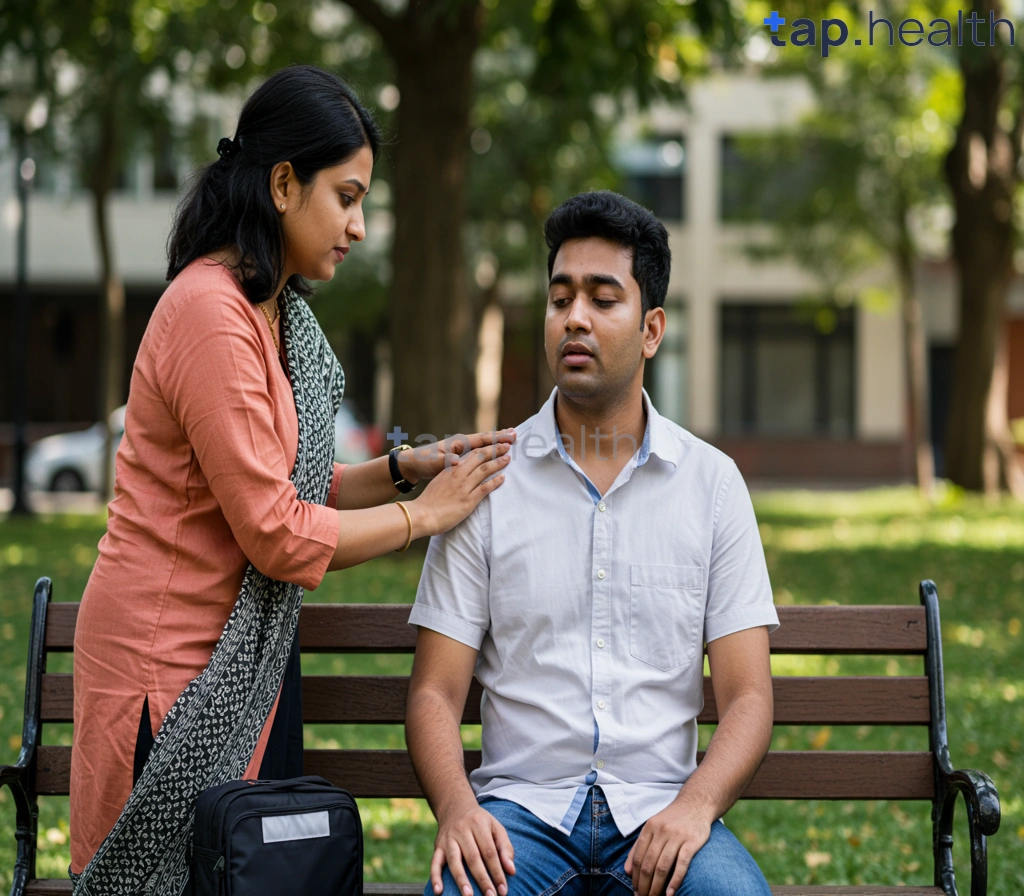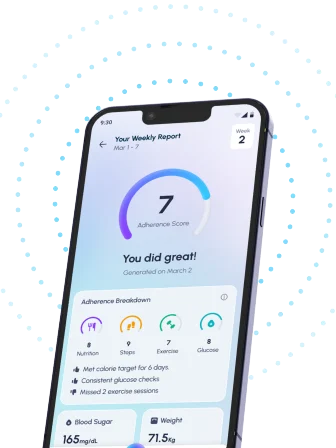Table of Contents
- Yoga and Diabetes: Finding Your Balance
- Manage Diabetes with Yoga: A Beginner’s Guide
- Stress Less, Balance Blood Sugar: Yoga for Wellbeing
- Discover the Benefits of Yoga for Diabetes Management
- Is Yoga Effective for Diabetes? Find Out Now
- Frequently Asked Questions
- References
Living with diabetes can feel like a constant balancing act, but what if we told you there’s a powerful tool to help you regain control and improve your overall well-being? Find Your Balance: Yoga for Diabetes Management and Well-being explores the incredible benefits of yoga for individuals managing diabetes. This isn’t just about physical poses; it’s about cultivating mindfulness, reducing stress, and improving blood sugar control – all crucial elements in living a healthier, happier life. We’ll delve into specific yoga practices, explore their impact on diabetes management, and share practical tips you can implement today. Ready to discover the transformative power of yoga? Let’s begin!
Yoga and Diabetes: Finding Your Balance
Millions struggle with diabetes, a significant portion being adults aged 20-64, as highlighted by the International Diabetes Federation’s Diabetes Atlas. In India and tropical countries, where lifestyle-related diseases are increasingly prevalent, managing diabetes effectively is crucial. Yoga, a practice deeply rooted in Indian culture, offers a holistic approach to managing this condition. It’s not a cure, but a powerful tool to improve well-being and control blood sugar levels.
Yoga’s Benefits for Diabetes Management
Specific yoga poses and breathing techniques can help regulate blood sugar levels. Asanas like Bhujangasana (Cobra Pose) and Dhanurasana (Bow Pose) improve insulin sensitivity and stimulate the pancreas. Pranayama exercises, such as Kapalabhati (Skull Shining Breath) and Ujjayi (Victorious Breath), help regulate respiration and reduce stress, both key factors in managing diabetes. Regular practice can lead to improved cardiovascular health, weight management, and reduced stress—all crucial aspects of successful diabetes management. Furthermore, the mindful aspect of yoga promotes a healthier lifestyle, encouraging better dietary choices and physical activity. Many of the benefits of yoga extend to other health concerns as well; for example, see our article on Yoga: A Natural Solution for High Blood Pressure.
Finding a Suitable Yoga Practice
For individuals with diabetes in India and tropical regions, choosing a suitable yoga style is essential. Consult with a qualified yoga instructor experienced in adapting practices for individuals with specific health conditions. Beginners should start slowly and gradually increase the intensity and duration of their practice. Remember, listening to your body and respecting its limitations is paramount. Consider incorporating yoga into your daily routine alongside prescribed medication and a balanced diet for optimal results. Prioritize consistent practice for sustained benefits in your diabetes management journey. As you age, managing diabetes can present unique challenges. For further insights, check out our article on Managing Diabetes as You Age: Challenges and Solutions.
Manage Diabetes with Yoga: A Beginner’s Guide
Understanding the Challenge
In India, and many tropical countries, diabetes is a significant health concern. Over 60% of people with diabetes also grapple with hypertension, highlighting the urgent need for effective management strategies. Yoga offers a holistic approach, combining physical postures (asanas), breathing techniques (pranayama), and meditation to improve overall well-being and help manage blood sugar levels.
Yoga for Blood Sugar Control
Specific yoga poses can help regulate insulin sensitivity and improve blood circulation, crucial for diabetes management. Gentle movements like cat-cow pose and downward-facing dog can enhance flexibility and improve blood flow. Pranayama exercises, such as deep belly breathing and alternate nostril breathing, can reduce stress and regulate the nervous system, both contributing factors to blood sugar fluctuations. Regular practice can help improve glycemic control and reduce the risk of complications.
Getting Started with Yoga for Diabetes
Beginners should start slowly, with shorter sessions (15-20 minutes) and gradually increase duration and intensity as comfort allows. Focus on gentle poses and breathing exercises. It’s essential to consult with a healthcare professional and a qualified yoga instructor before starting any new exercise program, especially if you have existing health conditions like hypertension. Finding a local yoga class catering to individuals with diabetes can provide personalized guidance and support.
Maintaining Your Practice
Consistency is key. Aim for regular practice, even if it’s just a few minutes each day. Remember, yoga is a journey, not a race. Listen to your body, and don’t hesitate to modify poses as needed. By incorporating yoga into your daily routine, you can take a proactive step towards better managing your diabetes and overall health and well-being. For more practical tips, check out our guide on 10 Proven Tips to Effectively Manage Diabetes. Find a supportive community for encouragement and motivation. Your health is an investment, and yoga can be a powerful tool in your diabetes management strategy. Learning about other effective management strategies is also important, and you can find more information in our article on 10 Proven Tips for Effective Diabetes Management.
Stress Less, Balance Blood Sugar: Yoga for Wellbeing
Harnessing the Power of Yoga for Diabetes Management in Tropical Climates
Did you know that daily consumption of sugary beverages raises your diabetes risk by a staggering 26%? In India and other tropical countries, where sugary drinks are prevalent, this statistic highlights a critical need for preventative health measures. Yoga, a practice deeply rooted in many Asian cultures, offers a powerful, accessible, and holistic approach to managing diabetes and improving overall wellbeing. Its emphasis on mindful movement, breathing techniques, and stress reduction directly combats many of the factors contributing to this growing health concern.
Yoga Asanas for Blood Sugar Control & Stress Reduction
Specific yoga asanas (postures) can significantly impact blood sugar levels and stress management. For example, poses like pranayama (breathing exercises) help regulate the nervous system, reducing stress—a major contributor to blood sugar imbalances. Paschimottanasana (seated forward bend) and Bhujangasana (cobra pose) gently stimulate the pancreas, aiding insulin production. Regular practice, coupled with a balanced diet, can lead to significant improvements in blood glucose control. Remember to consult your doctor or a qualified yoga instructor before starting any new exercise regime, particularly if you have pre-existing health conditions. Understanding how stress hormones affect diabetes is crucial for effective management.
Finding Your Balance: Yoga and a Healthy Lifestyle
Incorporating yoga into your daily routine, combined with mindful eating and stress-reduction techniques, provides a comprehensive strategy for managing diabetes in hot and humid climates. The gentle movements and deep breathing can be particularly beneficial in managing the heat and fatigue often associated with tropical environments. Remember, yoga isn’t a cure, but a powerful tool in your overall health and wellness journey. Learning effective stress management tips for better diabetes control can significantly enhance the benefits of your yoga practice.
Start Your Yoga Journey Today
Find a local yoga class or instructor in your community and begin your journey towards a healthier, more balanced life. Numerous studios across India and other tropical regions offer specialized classes for diabetes management. Take that first step today and experience the transformative power of yoga.
Discover the Benefits of Yoga for Diabetes Management
Yoga: A Holistic Approach to Diabetes Management in India and Tropical Climates
Managing diabetes effectively is crucial, especially considering that women with diabetes in regions like India and other tropical countries face a 40% higher risk of heart disease compared to men with the same condition. This alarming statistic underscores the need for holistic approaches to diabetes management that go beyond medication. Yoga offers a powerful and accessible solution, combining physical postures, breathing techniques, and meditation to improve overall well-being and help regulate blood sugar levels.
Improved Insulin Sensitivity & Stress Reduction
Regular yoga practice can enhance insulin sensitivity, a key factor in managing type 2 diabetes. The gentle stretches and mindful movements improve circulation, aiding in the efficient delivery of insulin throughout the body. Furthermore, yoga is a proven stress reliever, and chronic stress is known to negatively impact blood sugar control. By reducing stress, yoga helps to stabilize blood sugar levels and prevent dangerous spikes. In the hot and humid climates of India and other tropical regions, stress management is particularly important for maintaining overall health. This is further emphasized by the importance of Why Regular Exercise is Essential for Diabetes Management, which complements the benefits of yoga.
Practical Tips for Integrating Yoga into Your Routine
Beginners can start with gentle yoga styles like Hatha or Yin yoga, focusing on poses that improve flexibility and reduce stress. Even short, 15-20 minute sessions daily can yield significant benefits. Consider incorporating pranayama (breathing exercises) like deep abdominal breathing or alternate nostril breathing to calm the nervous system and improve blood circulation. Remember to consult your doctor or a qualified yoga instructor before starting any new exercise program, especially if you have pre-existing health conditions. Many yoga studios in India and other tropical countries offer specialized classes for people with diabetes. Prioritize consistency; the cumulative effects of regular yoga practice will be most impactful in your diabetes management journey. Remember that managing diabetes also involves protecting your heart; read more about this in our blog on Protect Your Heart from Diabetes: 5 Essential Steps.
Is Yoga Effective for Diabetes? Find Out Now
Understanding the Diabetes Challenge in India and Tropical Countries
Diabetes is a growing concern globally, and its impact is particularly significant in India and tropical countries. While precise figures vary, the prevalence of diabetes is notably high in these regions. This is further compounded by the rising rates of childhood diabetes; according to the CDC, approximately 35 per 10,000 U.S. youths have diagnosed diabetes. Learn more about diabetes statistics. The combination of genetic predisposition and lifestyle factors contributes to this alarming trend. Effective management strategies are crucial for improving the quality of life for those affected.
Yoga: A Holistic Approach to Diabetes Management
Yoga, with its emphasis on physical postures (asanas), breathing techniques (pranayama), and meditation, offers a holistic approach to managing diabetes. Studies suggest that regular yoga practice can help improve insulin sensitivity, reduce blood sugar levels, and manage weight—all crucial factors in diabetes control. The stress-reducing effects of yoga are also beneficial, as chronic stress can exacerbate diabetes symptoms. Specific yoga styles like Hatha and Vinyasa are particularly recommended due to their focus on mindful movement and breathing. Many wonder if other approaches can help, and some explore alternative methods like those discussed in Is Marijuana Good for Diabetes? Exploring the Effects and Benefits.
Actionable Steps for Integrating Yoga into Your Routine
For individuals in India and tropical countries, incorporating yoga into daily life can be particularly beneficial. Start with short, beginner-friendly sessions and gradually increase the duration and intensity. Focus on poses that improve flexibility, strength, and balance. Remember to consult your doctor or a qualified yoga instructor before starting any new exercise program, especially if you have pre-existing health conditions. Many community centers and studios across India and other tropical countries offer affordable yoga classes tailored to local needs and preferences. Taking advantage of these resources can significantly enhance the benefits of yoga for diabetes management. While yoga offers a path to management, it’s important to also understand the possibilities discussed in Can You Get Rid of Diabetes? – Tap Health.
Embrace a Healthier You
Begin your journey towards better diabetes management today. Explore the numerous yoga resources available in your region and experience the transformative power of this ancient practice. Remember, consistency is key—small steps towards a healthier lifestyle accumulate to make a significant difference in the long run.
Frequently Asked Questions on Yoga for Diabetes Management
Q1. Can yoga really help manage my diabetes?
Yes, yoga offers a holistic approach to managing diabetes by improving blood sugar control, insulin sensitivity, and overall well-being. It complements, but doesn’t replace, medical treatment and medication.
Q2. What types of yoga are best for diabetes?
Specific yoga poses (asanas) like Bhujangasana (Cobra Pose) and Dhanurasana (Bow Pose), and breathing techniques (pranayama) such as Kapalabhati and Ujjayi are beneficial. It’s best to start with a qualified instructor.
Q3. What are the benefits of yoga for someone with diabetes beyond blood sugar control?
Yoga helps improve cardiovascular health, aids in weight management, reduces stress, and promotes a healthier lifestyle through mindful eating and increased physical activity.
Q4. How do I get started with yoga for diabetes management?
Begin slowly and consult a qualified yoga instructor experienced in working with individuals with diabetes. They can guide you on suitable poses and breathing techniques for your fitness level.
Q5. Is yoga a replacement for my diabetes medication or doctor visits?
No, yoga is a complementary therapy. It should be used in conjunction with prescribed medication and regular check-ups with your doctor. It is not a substitute for medical treatment.
References
- A Practical Guide to Integrated Type 2 Diabetes Care: https://www.hse.ie/eng/services/list/2/primarycare/east-coast-diabetes-service/management-of-type-2-diabetes/diabetes-and-pregnancy/icgp-guide-to-integrated-type-2.pdf
- Children with Diabetes : A resourse guide for families and school. : https://www.health.ny.gov/publications/0944.pdf




